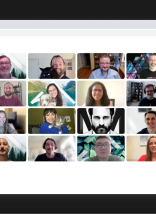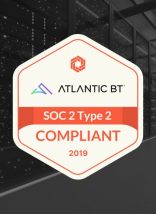One might think that IT system vulnerabilities are decreasing. With the spread of virtualization and cloud adoption, we assume that security is getting stronger. Configuration and hardening technologies continue to evolve, resulting in a lower surface vulnerability – right?
Wrong! Not even close.
Hackers are finding new ways to target and exploit your organization’s vulnerabilities. The National Vulnerability Database maintains over 110,000 common vulnerabilities entries. In fact, by January 4th 2019, and the NVB has already logged 39 new vulnerabilities entries for 2019.
Why You Need Vulnerability Management
Vulnerability Scanning is vital; it protects the hygiene of your systems by reducing attack surfaces. This protection can (and should) take a number of forms:
External Protection
An external attack is one done from the outside. A hacker tries to gain access to your organization’s devices and systems via the Internet. Oftentimes, your environment will have unnecessary ports open. Since they’re not in use, they are easy-to-miss open doors for a potential breach. When a breach occurs, you should disable these ports and any other insecure communications protocols.
Internal Protection
An internal attack is when a hacker tries to gain access through your organization’s personal wired and wireless networks. Password credentials can be one of the main issues here. They often allow for more access to systems than is necessary for that user’s role. Your organization should be leveraging identity management tools. These provide the appropriate level of access to systems needed, typically based on an employee’s position.
Phishing Protection
No explanation needed here, right? Hackers today are taking advantage of multiple ways to socially engineer access to your organization, and they’re doing it through your employees! Phishing’s reputation precedes it, keeping everyone on high alert. Unfortunately, the majority of breaches still happen at the human level. Educating your employees on phishing remains critical, but you can take this a step farther. Increase awareness by gaining actual business insight with testing results.
Application Pen Testing
Whether your application is for your internal operations or customer-facing, pen testing is essential. Vulnerabilities are often present in all application code. Best practices for development involve SecDevOps, or having security built into the development life cycle. If your company has developed an application for client use, be ready. Legal negligence will be your fault if you’re not rigorously performing security testing. While Equifax is a prime example, this can happen to organizations of any size. Hackers don’t care about the general scope of your company. They’re after the data!
How Vulnerability Scanning Works
With proper planning, you can do these types of testing in a non-disruptive way. It’s important to notify any Cloud providers when you schedule scans to run. They should be aware of when the scans will take place. Good deliverables should contain specific details about the vulnerabilities. This would include a ranking according to severity. Each vulnerability should have a recommended remediation approach. This is a productive action that your IT teams can tackle. When remediation is not viable, you must stay up to date with documentation. This is especially important if your organization must comply with specific Cybersecurity Frameworks.
At Atlantic BT, we’re always ready and alert. Our Managed Vulnerability Scanning service is dependable and efficient. It provides our clients with an ongoing peace of mind. Their technical vulnerabilities and security issues are being identified. Best practice remediation is being suggested. Even better, risks are actively minimized around data loss and disruption.
Security From Top to Bottom and Beyond
ABT’s Security Solutions leadership and engineers have over 20 years of field experience. Our range of work includes:
- Information Security Consulting
- Security Operations
- Incident Response
- Managed Security Services
We would never tell a client to do something we wouldn’t do ourselves. Therefore, we’ve integrated security best practices into our own daily operations. We’ve also navigated a variety of scenarios that our clients have faced. While doing so, we’ve utilized cybersecurity tools that continue to evolve in the marketplace.
Our security team has helped many customers assess their security posture. We ensure they are covered by implementing security layers around every access point. Protection includes access controls and permissions, data encryption (both on-premise and in the cloud), and in-depth analysis to pinpoint cracks in the wall. To learn the ins and outs of your security needs, contact us today for a security assessment.








